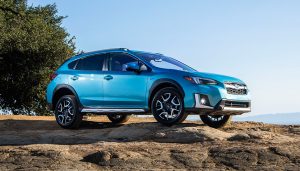
Before you take it home, be sure to take a potentially new used car for a drive.
Buying Your First Used Car: Part 2
Welcome to Part 2 of our Buying Your First Used Car series. Here, we’ll focus on the back half of buying used cars: research, test drives, inspections, and negotiation. If you’d like to see the front half of the used vehicle buying adventure, Part 1 is just a click away.
More Research
Now that you’ve circled and saved a few possibilities, it’s time to do some more pre-owned car research. Check out online enthusiast forums for common issues for the year and model you’re looking at (there’s forums for everything, even the Toyota Yaris) and also check with government websites to see if there are any used car recalls that apply to you.
At this point, it’s also a good time to run a Carfax report on the vehicle if you have access to the car’s VIN. Carfax reports are not faultless, as they rely on self-reporting by owners and dealers for information, but it’s a good starting point for uncovering issues with the vehicle. If you don’t have access to the VIN yet, no worries, but run the report before you start negotiating.
It’s also good to remember that no two used cars are the same. Even if meticulous identical twins who lived and worked next to each other, whose identical families were always involved in the same activities and took vacations together owned the same year, make, and model vehicles that were built on the same day in the same factory, bought on the same day at the same dealership, and serviced at the same time by meticulous identical twin technicians, the cars will be different. This variance from one used car to another is what makes the test drive so invaluable.
Test Drive
Because every used car is different, it’s a good idea to bring along a friend for the test drive. They can poke around the car while you chat with the seller and vice versa. A second set of eyes is always helpful in either confirming the quality or finding faults you would have missed on your own.
Thoroughly inspect the car before going for the drive, looking in all of the nooks and crannies and taking special note of the issue areas uncovered in your research. The seller shouldn’t have any problem with an intensive check as long as they’re not trying to pull one over on you. If you don’t feel comfortable with the car or the situation, don’t hesitate to walk away. There’s more fish in the sea and more cars in the lot.
Make sure the body panels are smooth and fit evenly, the paint is even in color and thickness, and even bring a magnet to check for bondo or filler. If the fit is off, colors aren’t the same shade, or you find evidence of filler, this car had some body work done, possibly because of an accident.
During the test drive, go through routine system checks, much like you do when picking up a rental car. When on the road, pay extra attention to the little things.
Is the steering tight or is there a lot play in the steering wheel before the wheels turn? Are the brakes firm or do they feel spongy? Is there any clicking, ticking, or rattles that feel out of place? Everything you encounter is worth taking note of, good or bad.
Tracking straight at highway speeds is also important. To test this, at cruising speed, and without any other vehicles around, slowly take your hands off the steering wheel by about an inch, not too far in case of a problem but far enough to let the car handle on its own.
If the car continues straight, that’s a good sign; if it pulls in either direction, something is wonky with the vehicle’s steering/suspension and will need to be looked at. This part will only take a handful of seconds to do and after you’ve determined how the car tracks, put your hands back on the wheel.
At some point during the test drive, find an empty parking lot and test the vehicle’s emergency and rapid movement capabilities. Issues can pop up here that went unnoticed during the everyday driving part of the test drive, and it’s always important to make sure the car can perform well when you need it most.
You’ll want to perform slalom tests, some big and gentle and others smaller and quicker, making sure the steering is smooth in both directions and suspension components function normally. If the vehicle feels tight and firm while turning to the left, but soft and squishy on right handed maneuvers, there’s some suspension issues you’ll need to take a deeper look at.
Testing the emergency braking capabilities is also important during the empty parking lot portion of your test. Once or twice is all that’s needed, but you’ll want to stomp on the brakes exactly like you would in an emergency situation. Make sure the ABS, if the car is equipped, works smoothly, and the rotors and pads work evenly. Anything out of place (pulling one direction, pulsing, screeching, grinding) means the braking system is not up to par.
While the owner or dealer won’t let you autocross or live out your Formula 1 fantasies during the test drive, they should be comfortable with letting you push the limits a bit. If they aren’t, it may be a sign that there are hidden issues with the car.
Used Car Inspection
With the test drive over and your feeling that this is The One, it’s time to go in for a third party inspection at the shop of your choosing. You’ll foot the bill on this part, but around $100 lets a professional root around for anything that you may not have noticed during your own inspection and the test drive. It will give you peace of mind, knowing the ins and outs of what you’re purchasing.
If you’re not familiar with reputable shops in your area, ask friends or check reviews online.
At this time, getting a look at the title is important. Are there any liens or holds on it? That’s worrying because you’ll have to deal with the lien holder as well. Is it a restored/rebuilt/salvage title? That’s really worrying because at some point in the past, the insurance company decided that the vehicle was totaled in an incident and wrote it off as a loss.
With either of these issues, you should probably walk away to find a different car, especially because it’s your first used car. On the other hand, if the title is clean and clear, it’s time for the next step.
Negotiation
Here we are. All of the hard work and preparation has led to this moment.
The negotiation.
Thankfully, as a result of the time and effort you’ve put in, this part shouldn’t be too big of a deal. Both you and the seller are aware, by the third party inspection and the test drive, about what does and doesn’t need to be taken care of.
You’re also armed with plenty of research on values and potential expenses, giving you a level head and enough wisdom to know if the seller is asking too high a price.
They ask high, you bid low, you move a little closer to a deal. They hem, you haw, and move closer still. Eventually, you’ll settle on a price somewhere in the middle.
Or not. Maybe the seller wants too much or you could be wanting the car for too little. At this point, you’ll need to look into some other vehicles on your list. In the future, you two could make a deal, but sometimes it’s just not in the cards.
Again, if you don’t feel comfortable with the situation, either with the car, the price, or the seller, there’s nothing wrong with walking away. It may be frustrating now, but purchasing the wrong car will be far more frustrating later.
Instead, having settled on a price, it’s time to shake hands, sign some paperwork, and transfer money. If you don’t have insurance for your new-to-you vehicle, you’ll need it trailered home to sit until you do have insurance. If you have insurance, you’re now free to drive it away.
As a side note, individual states will also have different requirements on vehicle titles and licensing. Some will make you have these before you’re able to drive the car, while others may have a grace period, and you’ll want to check on your state’s procedures beforehand. In either case, this can be done at the DMV or with a notary public, again depending on state laws, when the time comes.
Hurray! You’re now the proud owner of an Explorer/Outback/190E or whatever it is you settled on. Buying the right used car at the right price is always an incredibly satisfying feeling. Almost like winning the lottery, but better, because you weren’t given it, you earned it.





